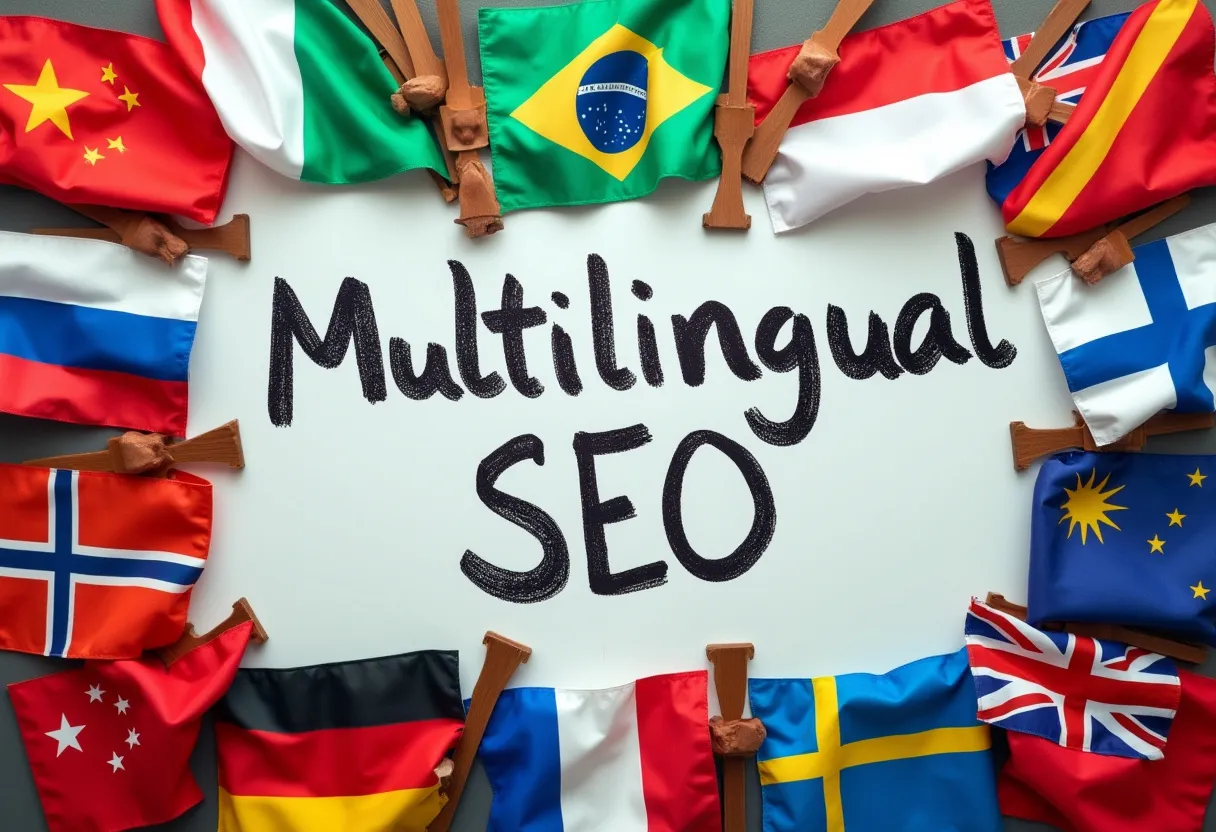Definition
What is Multilingual SEO?
Multilingual SEO is the practice of optimizing website content to be accessible and rank higher in search engine results pages (SERPs) for users searching in different languages. This involves translating and localizing website content to cater to international audiences.
How It Works
Function and Concept
Multilingual SEO is about targeting content and code to specific languages and regions, ensuring that international customers can find and engage with the website through their preferred language. This process includes several key steps:
Defining Target Markets
Identifying the regions and languages to target based on existing customers, website visitors, and strategically important markets.
Choosing Domain Structure
Deciding on the appropriate URL structure, such as subdirectories (e.g., example.com/fr) or subdomains (e.g., fr.example.com), to help search engines understand the geotargeting of the content.
Keyword Research and Translation
Conducting keyword research in multiple languages, translating keywords, and ensuring they are culturally and linguistically relevant. Direct translations are often insufficient, and native speakers or professional translators are essential for accurate keyword selection.
Content Translation and Localization
Translating the website content, including visible and invisible elements like metadata and alt text, to ensure the entire website is localized for the target audience. This involves using units of measurement, place names, currencies, and phrases relevant to the target audience.
Technical SEO
Implementing technical optimizations such as hreflang tags to help search engines understand the language and geographical targeting of the content. This ensures the right version of the website is shown to users based on their location and language preferences.
Why It Matters
Importance in SEO
Multilingual SEO is crucial for expanding a website’s reach to an international audience, thereby increasing organic website traffic and potential sales. Here are some key reasons why it matters:
Global Reach
Allows businesses to target customers in multiple countries and languages, significantly broadening their market.
User Experience
Enhances user experience by providing content in the user’s preferred language, which can lead to higher engagement and conversion rates.
Competitive Advantage
Gives businesses a competitive edge by catering to a diverse audience, which can result in higher search engine rankings and more organic traffic.
Search Engine Rankings
Improves search engine rankings by ensuring that the website appears at the top of SERPs for searches conducted in different languages.
Best Practices
Recommended Methods and Strategies
Here are some best practices to implement and optimize for multilingual SEO:
Define Clear Target Markets
Start by mapping out the countries, regions, and languages to target. This helps in understanding the unique cultural and linguistic nuances of each market.
Use Appropriate Domain Structure
Choose a URL structure that makes it easy for search engines to segment parts of the website for geotargeting. Options include subdirectories and subdomains.
Conduct Thorough Keyword Research
Research and select keywords that are relevant and popular in the target languages. Avoid direct translations and use tools like Google Trends to analyze keyword popularity.
Translate and Localize Content
Use professional translators to translate the content, ensuring it is culturally and linguistically accurate. Localize all elements of the website, including images, titles, and menus.
Implement Hreflang Tags
Use hreflang tags correctly to specify the language and region for each page, helping search engines serve the right version of the website to users based on their location and language preferences.
Internal Linking
Use internal links to connect relevant pages within the same language, helping users navigate the website and search engines understand the relationship between pages.
Build Relevant Backlinks
Acquire backlinks from reputable, high-authority websites that are relevant to both the niche and the language of the target audience. This enhances the website’s credibility and ranking potential.
Use Content Management Systems (CMS)
Utilize CMS like WordPress, Drupal, or Magento, which offer built-in features to support multilingual websites and simplify the management of multilingual content.
Additional Considerations
In addition to the best practices mentioned, several relevant terms are crucial for optimizing multilingual SEO:
Hreflang Tags
Hreflang tags are essential for specifying the language and region for each webpage, ensuring that the correct version is served to international users.
Content Localization
Content localization goes beyond translation. It involves adapting all website content to align with cultural, linguistic, and regional preferences.
Geo-Targeting SEO
Geo-targeting SEO focuses on optimizing content to rank well in specific geographic locations, which is critical for reaching international audiences.
Multilingual SEO
Multilingual SEO requires a careful balance of translation, localization, and SEO best practices to effectively reach and engage users in different languages.
Alt Text
Alt text is descriptive text added to images to improve accessibility and SEO. It should be translated and localized for each language version of the site.
International SEO
International SEO encompasses strategies to optimize a website for different countries and languages, ensuring global visibility in search results.
Global SEO Strategy
A global SEO strategy involves coordinating efforts across various regions and languages to maximize international search engine visibility and traffic.
Cross-Language Keyword Research
Cross-language keyword research involves identifying and adapting keywords for different languages, ensuring they are relevant and culturally appropriate.
Language-Specific SERP Analysis
Analyzing search engine results pages (SERPs) for specific languages helps understand how users in different regions search for content, informing better SEO practices.
Conclusion
Implementing multilingual SEO is essential for any business aiming to expand its reach to an international audience. By understanding the unique cultural and linguistic needs of different markets, conducting thorough keyword research, localizing content, and following best practices for technical SEO, businesses can significantly enhance their global visibility and achieve higher search engine rankings. Embracing a comprehensive global SEO strategy ensures that content resonates with users worldwide, providing a competitive edge in today’s interconnected digital landscape.



